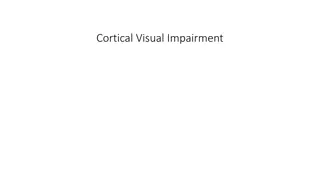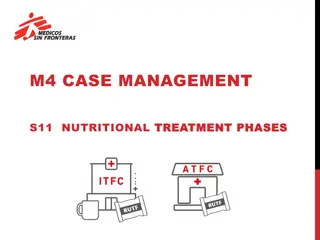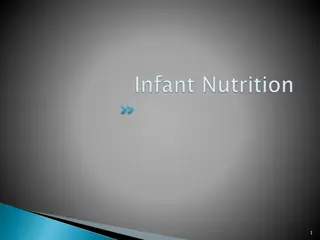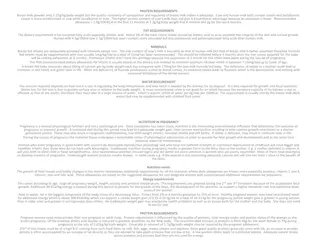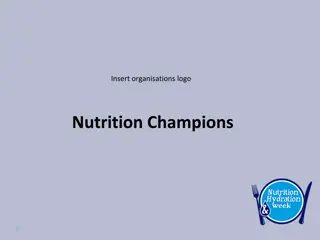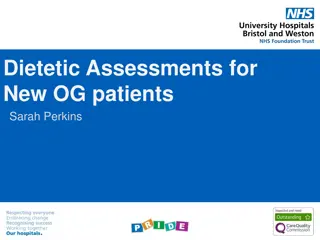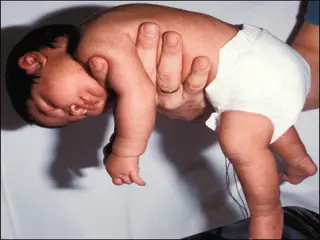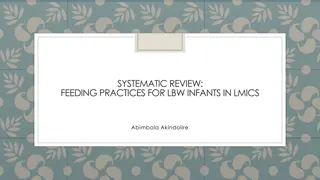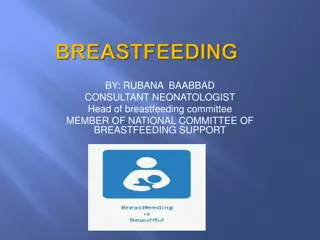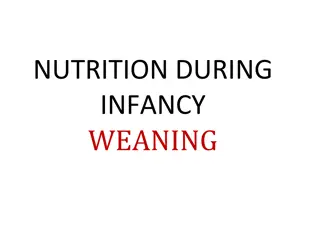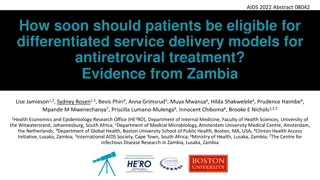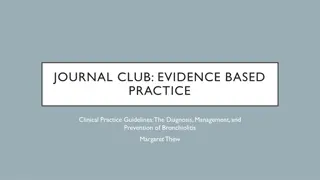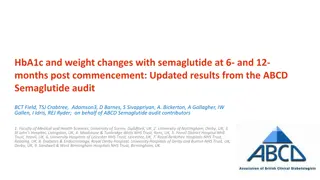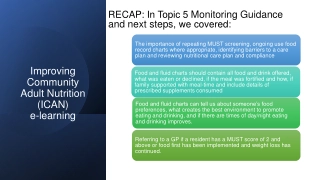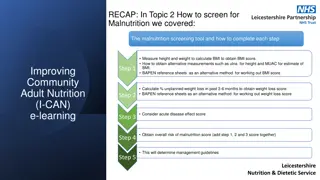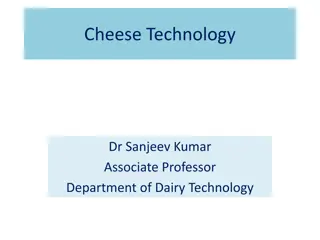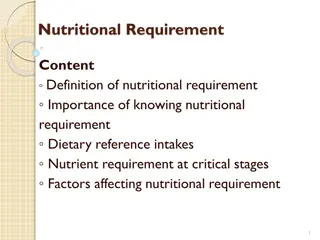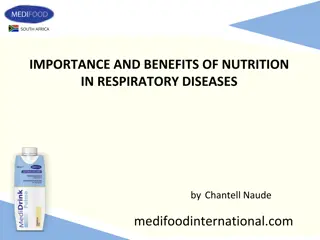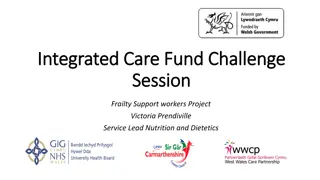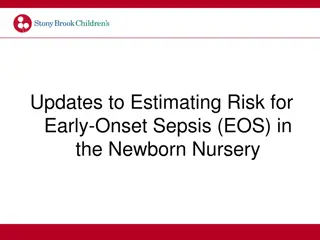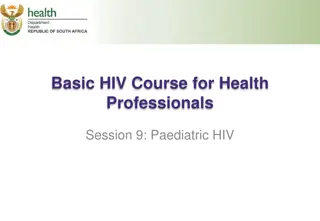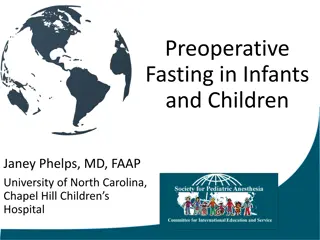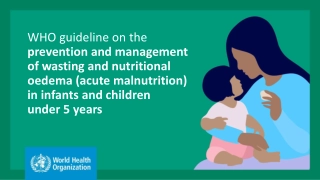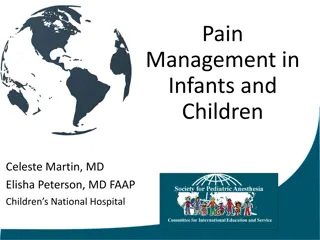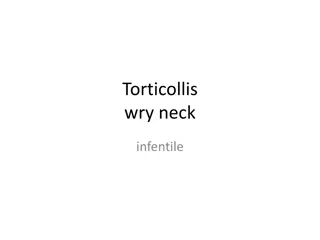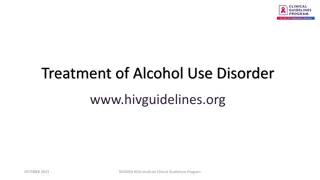Nutritional Treatment Guidelines for Infants Less Than 6 Months
This content provides valuable information on the nutritional treatment of infants less than 6 months old, focusing on the preference order of milks for treatment, preparation methods, administration guidelines based on weight and treatment stage, considerations for follow-up, and the importance of breastfeeding when possible. It emphasizes the use of breast milk as the primary choice and discusses the role of breast milk substitutes when necessary. The content also highlights the need for careful monitoring and support for both infants and mothers/caretakers in the treatment program.
Download Presentation

Please find below an Image/Link to download the presentation.
The content on the website is provided AS IS for your information and personal use only. It may not be sold, licensed, or shared on other websites without obtaining consent from the author. Download presentation by click this link. If you encounter any issues during the download, it is possible that the publisher has removed the file from their server.
E N D
Presentation Transcript
M6 CASE MANAGEMENT IN CASE MANAGEMENT IN INFANTS LESS THAN 6 INFANTS LESS THAN 6 MONTHS MONTHS S21. NUTRITIONAL TREATMENT NUTRITIONAL TREATMENT INFANTS LESS THAN 6 MONTHS (<6M) INFANTS LESS THAN 6 MONTHS (<6M)
OBJECTIVES OF THE SESSION At the end of this session participants will be able to: 1. Identify which milks are used for the nutritional treatment of infants 1-6 in an ITFC. 2. Know how to prepare the different types of milk. 3. Know how and when to administer the milk according to weight and stage of treatment.
QUESTION In a nutrition programme, what is the order of preference of the following milks for the correct nutritional treatment of infants? Infant formula, F-100 diluted, Breast milk Infant formula F-100 diluted Breast milk
CONSIDERATIONS-FOLLOW UP ITFC Separate room or space. ATFC Maternal counselling and support and checking the clinical status of the infants and mothers/caretakers. These infants need to be carefully monitored by experienced clinical staff. Ensure that all infants are gaining weight appropriately. The infant s weight should be checked daily. Follow-up weekly or more often Breastfeeding assessment. CHW home visit once a week Vaccination schedule Encourage maternal involvement & empowerment Scale graduated to within 10g (or 20g). Length of stay in the programme can vary widely.
IS BREASFEEDING A POSSIBILITY? WET NURSE?
TYPES OF MILK (LISTED IN ORDER OF PREFERENCE) 1. Breast milk 2. Breast milk substitute (BMS): infant formula or F-100 diluted (this choice is dependent on which MSF section you work for) However, if for an infant who does not have the possibility to BF, BMS is the preference as they will go home on this.
NUTRITIONAL TREATMENT FOR NUTRITIONAL TREATMENT FOR INFANTS FOR WHOM BREASTFEEDING INFANTS FOR WHOM BREASTFEEDING IS POSSIBLE IS POSSIBLE BF is sufficient but Intake is insufficient BF is insufficient
NUTRITION TREATMENT WITH BREASTFEEDING (WHEN INSUFFICIENT) Duration Breast Feeding (BF) BF on demand Stage Nutritional Treatment 7-10 days (can be less if infant gaining appropriate weight and progressing well) 1 100 kcal / kg / day F-100d/BMS/(F-75) in 8 - 12 feeds per day (every 2-3 hours*) USE QUICK TABLES FOR QUANITIES Plus Make sure the mother BF with the SST at each F-100d/BMS feed (use F-75 or BMS if Infant has oedema) 2-3 days If the child does not gain after 5-7 days Add extra 5 ml of F-100d/BMS to each feed Consider malabsorption (see NNGL & PGL) If Infant gained weight in Stage 1 (minimum 10g/day) decrease milk to: 75%, 50% and then 25% of quantity prescribed in Stage 1 in 8 - 12 feeds per day (every 2-3 hours*) Gradually At least 5 days in total: 2 BF on demand 1-3 days for each step of decrease, i.e: to 75% of stage 1 amount for 1-3 days to 50% of stage 1 amount for 1-3 days to 25% of stage 1 amount for 1-3 days Plus SST with each F-100d/BMS feed If the weight gain is not maintained 100d/BMS to 50% of Stage 1 quantity Give 50% of the quantity from Stage 1 for 2 3 days, then gradually decrease (as above) the amount again if the infant starts gaining weight Re-increase the amount of F- Infant gains 20g/day for 3 days on 25% of F-100 diluted (stage 2) STOP BMS/F-100d Once the infant is gaining weight at a rate of 20g per day on 25% of the amounts of F-100d/BMS from stage 1, stop F-100 diluted/BMS and go to exclusive BF. Keep the mother and infant admitted for an additional 2-3 days on breastmilk alone to ensure breastfeeding is well established and infant continues to gain weight 2-3 days 3 BF on demand
NUTRITION TREATMENT WITHOUT BREASTFEEDING DURATION STAG E 1 NUTRITIONAL TREATMENT BMS/F-100 DILUTED/(F-75) 100 kcal/kg/day of BMS/F-100d in 8 to 12 feeds/day* 5-7 days (can be less if infant gaining appropriate weight and progressing well, infants with oedema which takes more than approximately 4 to reduce, may need a little longer in this stage) (Infant with oedema: F-75 or BMS) USE QUICK TABLES FOR QUANTITIES (ml) 2-3 days 2 110-130 kcal/kg/day of BMS/F-100d in 8 to 12 feeds/day* (Infant with oedema: F-75 or BMS) USE QUICK TABLES FOR QUANTITIES (ml) 150 kcal/kg/day of BMS/F-100d in 8 to 12 feeds/day* 2-3 days 3 (Infant with oedema: F-75 or BMS) USE QUICK TABLES FOR QUANTITIES (ml)


